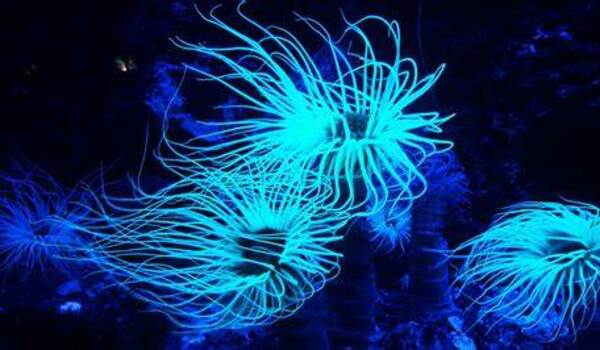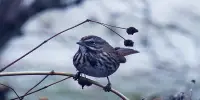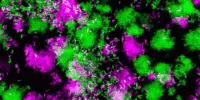Bioluminescence first evolved in animals at least 540 million years ago in a group of marine invertebrates called octocorals, according to the results of a new study from scientists with the Smithsonian’s National Museum of Natural History.
The results, published in the Proceedings of the Royal Society B, push back the previous record for the luminous trait’s oldest dated emergence in animals by nearly 300 million years, and could one day help scientists decode why the ability to produce light evolved in the first place.
Bioluminescence — the ability of living things to produce light via chemical reactions — has independently evolved at least 94 times in nature and is involved in a huge range of behaviors including camouflage, courtship, communication and hunting. Until now, the earliest dated origin of bioluminescence in animals was thought to be around 267 million years ago in small marine crustaceans called ostracods.
But for a trait that is literally illuminating, bioluminescence’s origins have remained shadowy.
“Nobody quite knows why it first evolved in animals,” said Andrea Quattrini, the museum’s curator of corals and senior author on the study. But for Quattrini and lead author Danielle DeLeo, a museum research associate and former postdoctoral fellow, to eventually tackle the larger question of why bioluminescence evolved, they needed to know when the ability first appeared in animals.
We wanted to figure out the timing of the origin of bioluminescence, and octocorals are one of the oldest groups of animals on the planet known to bioluminesce. So, the question was when did they develop this ability?
Danielle DeLeo
In search of the trait’s earliest origins, the researchers decided to peer back into the evolutionary history of the octocorals, an evolutionarily ancient and frequently bioluminescent group of animals that includes soft corals, sea fans and sea pens. Like hard corals, octocorals are tiny colonial polyps that secrete a framework that becomes their refuge, but unlike their stony relatives, that structure is usually soft. Octocorals that glow typically only do so when bumped or otherwise disturbed, leaving the precise function of their ability to produce light a bit mysterious.
“We wanted to figure out the timing of the origin of bioluminescence, and octocorals are one of the oldest groups of animals on the planet known to bioluminesce,” DeLeo said. “So, the question was when did they develop this ability?”
Not coincidentally, Quattrini and Catherine McFadden with Harvey Mudd College had completed an extremely detailed, well-supported evolutionary tree of the octocorals in 2022. Quattrini and her collaborators created this map of evolutionary relationships, or phylogeny, using genetic data from 185 species of octocorals.

With this evolutionary tree grounded in genetic evidence, DeLeo and Quattrini then situated two octocoral fossils of known ages within the tree according to their physical features. The scientists were able to use the fossils’ ages and their respective positions in the octocoral evolutionary tree to date to figure out roughly when octocoral lineages split apart to become two or more branches. Next, the team mapped out the branches of the phylogeny that featured living bioluminescent species.
With the evolutionary tree dated and the branches that contained luminous species labeled, the team then used a series of statistical techniques to perform an analysis called ancestral state reconstruction.
“If we know these species of octocorals living today are bioluminescent, we can use statistics to infer whether their ancestors were highly probable to be bioluminescent or not,” Quattrini said. “The more living species with the shared trait, the higher the probability that as you move back in time that those ancestors likely had that trait as well.”
The researchers used numerous different statistical methods for their ancestral state reconstruction, but all arrived at the same result: Some 540 million years ago, the common ancestor of all octocorals were very likely bioluminescent. That is 273 million years earlier than the glowing ostracod crustaceans that previously held the title of earliest evolution of bioluminescence in animals.
DeLeo and Quattrini said that the octocorals’ thousands of living representatives and relatively high incidence of bioluminescence suggests the trait has played a role in the group’s evolutionary success. While this further begs the question of what exactly octocorals are using bioluminescence for, the researchers said the fact that it has been retained for so long highlights how important this form of communication has become for their fitness and survival.
Now that researchers know the common ancestor of all octocorals likely possessed the ability to make its own light, they want to know more about which of the group’s more than 3,000 surviving species can still light up and which have lost the ability. This could assist identify a set of ecological conditions that connect with bioluminescence and, potentially, illuminate its purpose.
To that aim, DeLeo and some of her co-authors are developing a genetic test to identify whether an octocoral species contains functional copies of the genes underpinning luciferase, a bioluminescent enzyme. For species of unknown luminosity, such a test would enable researchers to get an answer one way or the other more rapidly and more easily.
















